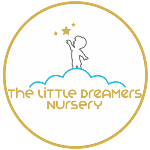Interactive learning is one of the most effective and enjoyable ways to teach young children essential skills like recognizing letters and numbers. Through interactive learning games, toddlers can develop early literacy and numeracy skills while having fun. This article explores the benefits of interactive learning, shares engaging educational games for toddlers, and offers practical tips for parents to make learning playful and exciting.
Benefits of Interactive Learning
Interactive learning is more than just play—it’s an essential part of early childhood education. By engaging multiple senses, these activities make learning memorable and meaningful for toddlers.
Boosts Engagement
Games and hands-on activities keep children’s attention better than passive learning methods. Bright visuals, sounds and movements spark curiosity, making children eager to participate.
Develops Foundational Skills
Interactive activities promote early literacy and numeracy by helping children recognize letters, numbers and patterns. These foundational skills pave the way for academic success.
Encourages Social and Emotional Growth
Many interactive learning games involve group play, teaching children cooperation, turn-taking and problem-solving. These experiences contribute to emotional resilience and social development.
Fun Games for Teaching Letters
Letter recognition is a vital step in early literacy. Here are some creative and engaging alphabet games for children to make learning letters enjoyable.
⦁ Alphabet Scavenger Hunt
Turn learning letters into an adventure! Write letters on small pieces of paper and hide them around the house. Encourage your child to find each letter and match it to objects that start with the same letter. For example, match “B” with a ball.
⦁ Letter Fishing
Create a “fishing game” using a magnet, a string and paper fish with letters written on them. Children can “catch” a fish and identify the letter. Bonus points if they can say a word that starts with that letter!
⦁ DIY Alphabet Puzzles
Cut out large letters from cardboard and have your child match each letter to a corresponding word or picture. For example, match “A” to an apple drawing. This tactile activity helps reinforce letter shapes and sounds.
⦁ Singing the ABCs with Movement
Combine singing the alphabet song with actions like clapping or hopping for each letter. This multisensory approach helps children retain what they’ve learned while staying active.
 Counting and recognizing numbers are the building blocks of numeracy. These interactive games make learning numbers an enjoyable experience.
Counting and recognizing numbers are the building blocks of numeracy. These interactive games make learning numbers an enjoyable experience.
⦁ Hopscotch Numbers
Draw a hopscotch grid and write numbers in the boxes. As your child hops through, encourage them to call out the numbers. For added learning, have them add or subtract the numbers they land on.
⦁ Count and Sort
Use everyday objects like buttons, blocks or beads. Ask your child to count a specific number of items and sort them by colour or size. This reinforces counting skills and introduces basic math concepts.
⦁ Number Line Jump
Create a number line on the floor using tape. Call out a number and have your child jump to it. For more advanced play, give simple addition or subtraction problems and they must jump to the correct answer.
⦁ Snack Math
Turn snack time into a learning opportunity! Use small, countable snacks like crackers or grapes. Ask your child to count, group or divide the snacks into portions. Learning has never been so tasty!
Tips for Parents: Making Interactive Learning Fun
Interactive learning should be engaging and stress-free. Here are some tips to ensure a fun and successful experience:
⦁ Mix Physical and Digital Activities
Balance hands-on learning games with age-appropriate digital games. Many apps focus on teaching letters and numbers in a fun and interactive way.
⦁ Use Everyday Items
You don’t need expensive materials to create interactive activities. Household items like cups, spoons or paper can become tools for hands-on learning.
⦁ Encourage Progress, Not Perfection
Focus on your child’s effort and progress rather than accuracy. Celebrate small wins to keep their motivation high.
⦁ Create a Routine
Incorporate learning games into daily routines, like playing number games during breakfast or practising the alphabet before bedtime. Consistency helps reinforce learning.

Try It Yourself: Start the Fun Today!
Interactive learning makes education an exciting adventure for your little one. Pick one of the games mentioned above, like the Alphabet Scavenger Hunt or Hopscotch Numbers, and try it at home. Share your child’s progress and favourite games in the comments below!
For more ideas, explore The Best Interactive Games for Toddlers That Every Parent Should Know.
You’ll find plenty of inspiration to make learning playful and meaningful.
Interactive learning not only builds essential skills but also strengthens the bond between parent and child. By incorporating these fun and educational activities, you can nurture your toddler’s love for learning while creating lasting memories. Let the learning—and laughter—begin!









